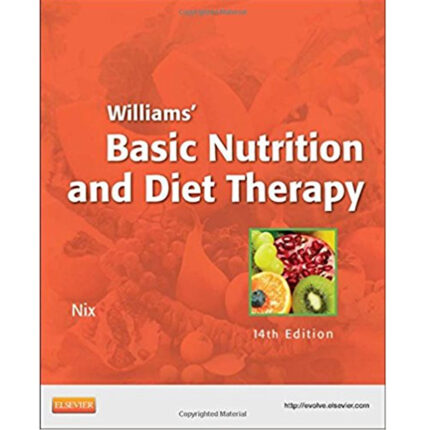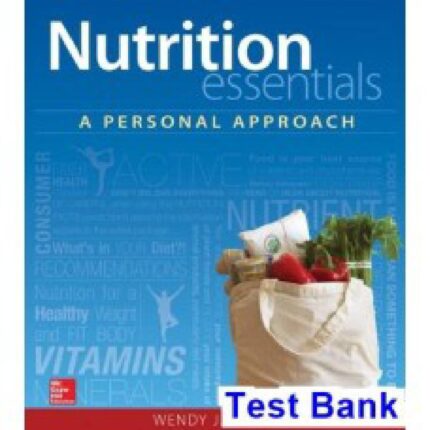Overview
Chapter 11
Weight Maintenance and Loss through Proper Nutrition and Exercise
1) A comprehensive weight-control program should include a balanced, reduced-kcal diet and ________.
A) aerobic exercise
B) resistance training
C) appropriate behavior modification
D) All of the choices are correct.
Answer: D
Section: Basics of Weight Control; Comprehensive Weight Control Programs
Topic: Energy Balance and Weight Control; Weight Management Strategies
Bloom’s: 1. Remember
Learning Outcome: 11.10 Describe how diet and exercise complement each other to help lose or maintain body weight, citing the benefits of each that help compensate for the possible deficiencies of the other.; 11.03 Identify behavior modification techniques that are appropriate to incorporate into a recommended weight-loss program.
2) One pound of body fat is equivalent to approximately ________ kcal.
A) 3,500
B) 3,000
C) 2,500
D) 2,000
Answer: A
Section: Basics of Weight Control
Topic: Energy Balance and Weight Control
Bloom’s: 1. Remember
Learning Outcome: 11.01 Establish how many kcals per day are needed to maintain one’s current body weight with either a sedentary or a physically active lifestyle.
3) Which of the following statements concerning the caloric concept of weight control is false?
A) The First Law of Thermodynamics is the physical basis for body-weight control
B) Changes in the different components that comprise the total body weight may bring about body-weight fluctuations that appear contrary to the caloric concept
C) Genetic differences between individuals is the only cause for the difference in weight between two people who have consumed the same amount of kcal
D) It takes more energy to convert dietary carbohydrates and protein into body fat than it does to convert dietary fat into body fat
Answer: C
Section: Basics of Weight Control
Topic: Energy Balance and Weight Control; Weight Management Strategies
Bloom’s: 1. Remember
Learning Outcome: 11.01 Establish how many kcals per day are needed to maintain one’s current body weight with either a sedentary or a physically active lifestyle.
4) Each of the following factors is used in calculating resting energy expenditure (REE) except ________.
A) body composition
B) gender
C) age
D) weight
Answer: A
Section: Basics of Weight Control
Topic: Energy Balance and Weight Control; Weight Management Strategies
Bloom’s: 1. Remember
Learning Outcome: 11.01 Establish how many kcals per day are needed to maintain one’s current body weight with either a sedentary or a physically active lifestyle.; 11.02 Calculate the amount of weight loss needed to attain a healthier BMI or body-fat percentage.
Activity Type: New
5) Shannon would like to lose 1 lb of weight per week. To do so, she should reduce her daily kcal intake by ________ kcal.
A) 300–500
B) 100–300
C) 800–1,000
D) 600–800
Answer: A
Section: Basics of Weight Control
Topic: Energy Balance and Weight Control; Weight Management Strategies
Bloom’s: 2. Understand
Learning Outcome: 11.01 Establish how many kcals per day are needed to maintain one’s current body weight with either a sedentary or a physically active lifestyle.; 11.02 Calculate the amount of weight loss needed to attain a healthier BMI or body-fat percentage.
Activity Type: New
6) Which of the following statements concerning behavior modification techniques and how they apply to a weight-control program is FALSE?
A) The individual is the most important component of a weight-control program
B) Behavior modification is used to reduce physical or social stimuli that may lead to excessive kcal intake or decreased physical activity
C) It is extremely important to set short-term goals so that the individual may experience multiple successes in pursuit of the long-term goal
D) All individuals wishing to implement a behavior modification program should seek professional assistance in developing such a program
Answer: D
Section: Behavior Modification
Topic: Energy Balance and Weight Control; Weight Management Strategies
Bloom’s: 2. Understand
Learning Outcome: 11.03 Identify behavior modification techniques that are appropriate to incorporate into a recommended weight-loss program.
7) Alan burns approximately 2,400 kcal daily and consumes approximately 2,000 kcal daily. He is likely to experience ________ as a result of burning more kcal than he comes daily.
A) weight loss
B) weight gain
C) weight maintenance
Answer: A
Section: Basics of Weight Control
Topic: Energy Balance and Weight Control; Weight Management Strategies
Bloom’s: 2. Understand
Learning Outcome: 11.01 Establish how many kcals per day are needed to maintain one’s current body weight with either a sedentary or a physically active lifestyle.; 11.05 State the key principles underlying a weight-control diet designed to maintain a healthy body weight for a lifetime.; 11.04 Determine the number of daily kcals needed to lose body fat by diet alone, or with a combination diet-exercise program.
Activity Type: New
8) Which of the following is NOT a recommended characteristic of a sound diet for weight control?
A) The diet should include fat-burning enzymes to optimize weight loss
B) The diet should be low in kcal and yet supply all nutrients essential to normal body function
C) The diet should be suited to the individual’s current lifestyle
D) The diet should provide for a slow rate of weight loss
Answer: A
Section: Dietary Modifications
Topic: Energy Balance and Weight Control; Weight Management Strategies
Bloom’s: 1. Remember
Learning Outcome: 11.05 State the key principles underlying a weight-control diet designed to maintain a healthy body weight for a lifetime.
9) Which of the following is INCORRECT for the role dietary fat appears to play in the development of obesity?
A) Dietary fat is stored as fat more efficiently than either carbohydrate or protein, even if the kcal intake is similar
B) There may be increased health risks due to the fact that dietary fat may be stored preferentially in the abdominal area
C) Dietary fat does not rapidly suppress the appetite, which may lead to an increase in kcal intake
D) To calculate the total number of grams of fat recommended for the daily diet, multiply kcal intake by 30 percent and then divide by 11
Answer: D
Section: Basics of Weight Control; Dietary Modifications
Topic: Energy Balance and Weight Control; Weight Management Strategies
Bloom’s: 1. Remember
Learning Outcome: 11.05 State the key principles underlying a weight-control diet designed to maintain a healthy body weight for a lifetime.
10) Which of the following activities burns the most kcal per minute?
A) Running, 8 mph
B) Golf, carrying clubs
C) Tennis, singles
D) Walking, 3 mph
Answer: A
Section: Exercise Programs
Topic: Energy Balance and Weight Control; Physical Activity and Exercise; Weight Management Strategies
Bloom’s:2. Understand
Learning Outcome: 11.07 Describe the value of exercise, including type, intensity, duration, and frequency, in a comprehensive weight-loss or weight-maintenance program.
Activity Type: New













Reviews
There are no reviews yet.